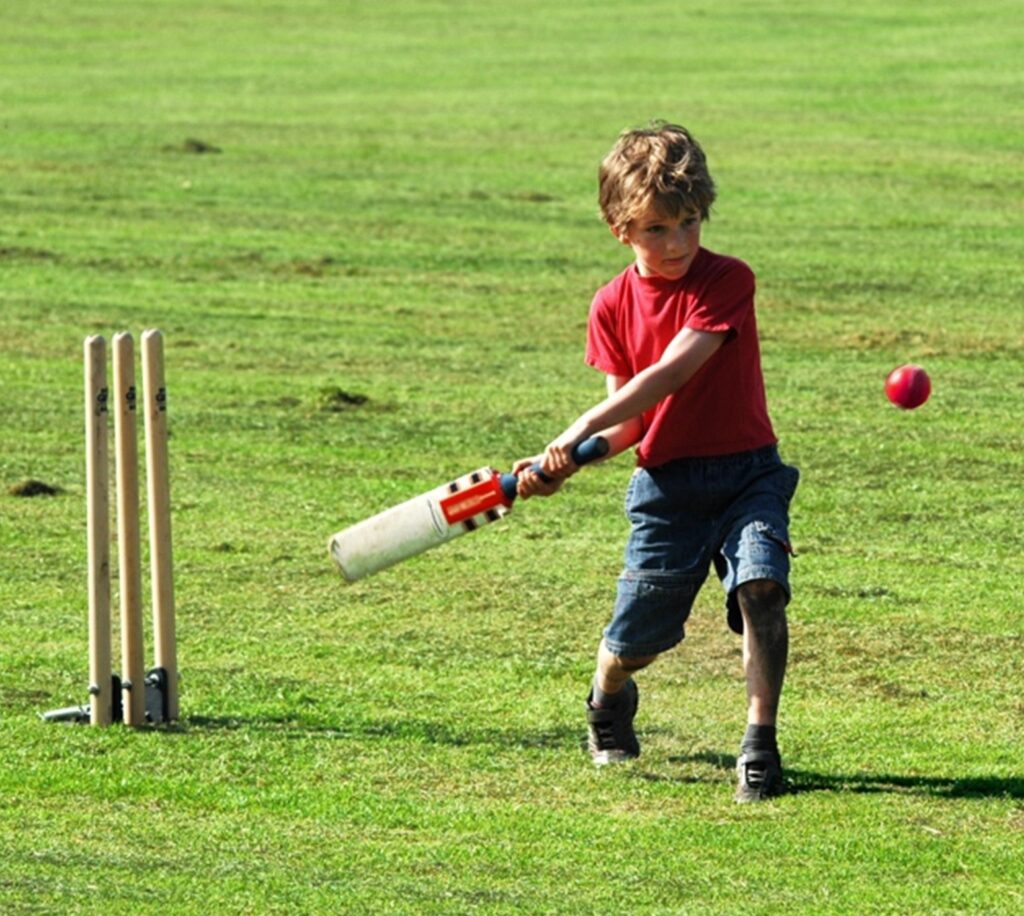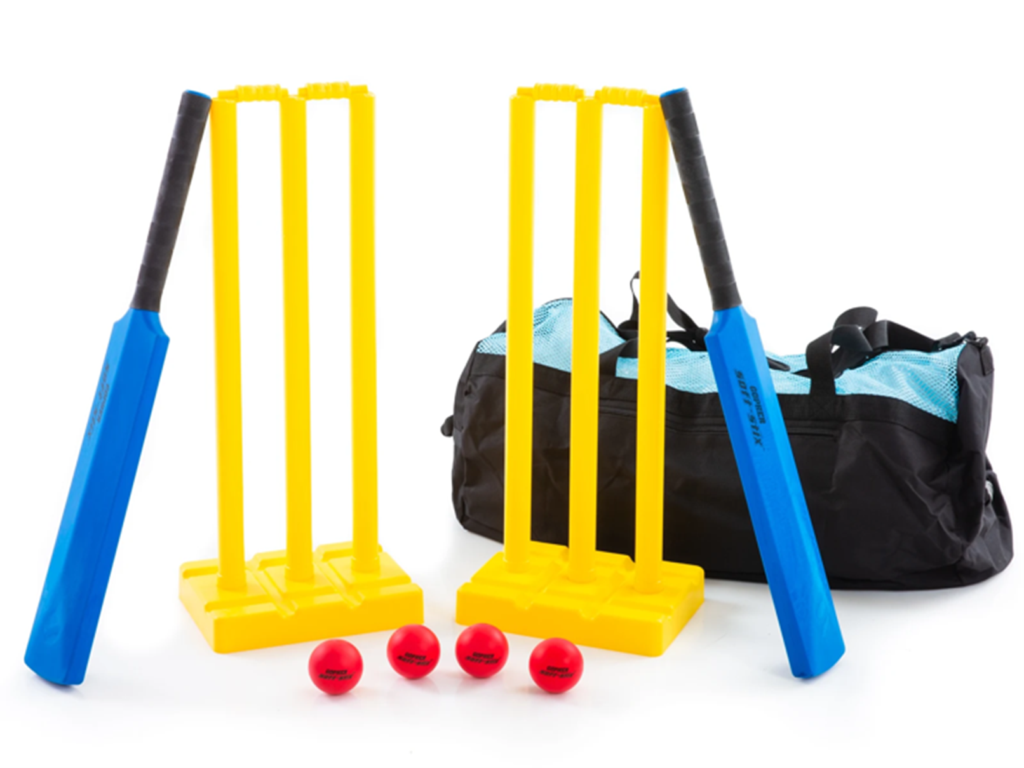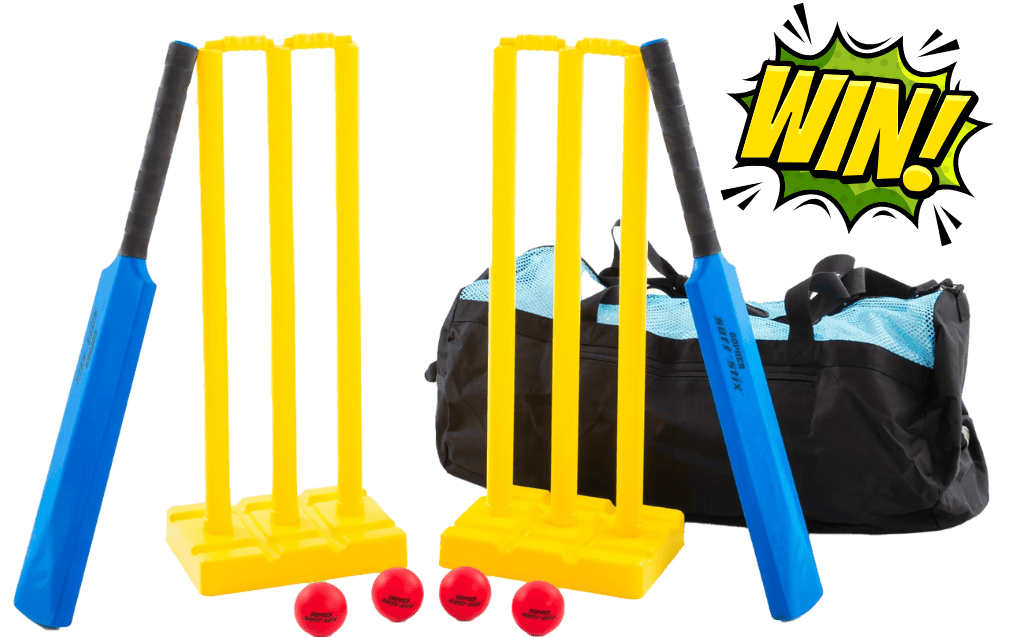
Cricket is an exciting and engaging sport for students. With its similarities to baseball and softball, along with worldwide media exposure, Cricket is somewhat familiar yet still offers a sense of novelty. This combination can intrigue students and keep them engaged. However, if not introduced properly, the excitement can quickly turn into frustration.
I’ve shared some key teaching strategies below to ensure your Cricket unit is a successful one!
Cricket requires proficiency in batting, bowling (pitching), and fielding. Introducing these skills with gradual progression and proper cues will help students gain confidence and develop essential techniques.

One of the biggest hurdles for students transitioning from baseball or softball is the natural wrist roll, which can cause the cricket bat to turn incorrectly during the swing.
To help students swing the bat correctly, start by encouraging them to hit with more accuracy rather than power.
Tip #1: While batting, use cone or hula hoop targets and encourage students to focus on a “chip” shot mentality. This helps reinforce placement hitting and swing mechanics.
Tip #2: Start by having students hit an underhand slow pitch style toss to will help build confidence before introducing more regular bowling.
Straight-arm bowling can be a struggle for many students who are used to “breaking” their elbow to throw (football, baseball, softball, etc.).
Tip #3: To gradually build confidence bowling, encourage students to start with an underhand toss (with or without a bounce) in early lessons. This will help them focus on throwing accuracy toward the wicket.
Tip #4: Incorporate repetitions in other practice tasks and/or instant activities with standard bowling form to help students prepare for regular gameplay. Student should still work on proper throwing technique. Adding these types of throws in group games will help students practice these throws in a faster environment.
Tip #5: Use a combination of wickets, propped-up hula hoops, and a line made from floor tape as a target for their ball to skip off to help students practice their throws.
When fielding, students often favor long throws to the wicket or passing the ball to the bowler, who then attempts to outrun the opposing player to secure an out. This approach can be inefficient and lead to missed opportunities.
Tip #6: To improve fielding strategies, students should practice relay throws from the outfield to the wicketkeeper, ensuring quicker and more accurate plays.
To reinforce these strategies, educators can introduce helpful cues, such as designating a cutoff player to facilitate smoother transitions and referring to the wicketkeeper as the catcher, making it easier for students to understand where to aim their throws.
Tip #7: Rotate the roles of bowler and wicketkeeper during gameplay to prevent dominant players from taking over while encouraging less confident students to participate.
Finally, surface conditions play a crucial role in successful gameplay. Soft ground or long grass can hinder effective bowling, regardless of the type of ball used, even if the space itself is the most suitable for play.
Tip #8: Adjust your gameplay to your environment. For example, prohibit bounces while bowling. This adjustment helps prevent students from overcompensating for the lack of bounce by increasing their bowling speed or using excessive downward motion, which can affect accuracy and control. Our goal is to encourage success and sometimes gameplay needs to be altered to help.

To effectively integrate cricket into your PE curriculum, follow these steps:
In conclusion, cricket is a great addition to any PE program. It brings a sense of novelty, which keeps students engaged without preconceptions getting in the way. Its cultural relevance sparks curiosity, and it’s a sport that works well even with small groups—just three players are enough to get a game going! Plus, its emphasis on sportsmanship makes it a valuable learning experience. By being aware of potential challenges, educators can create a cricket unit that boosts students’ confidence, sharpens their skills, and ensures they have a fun, positive experience with physical activity.


Contest ends May 30th, 2025 at 11:59 pm. One entry per person. Winner will be notified via email. View official giveaway terms and conditions.
© 2025 Gopher Sport. All Rights Reserved.